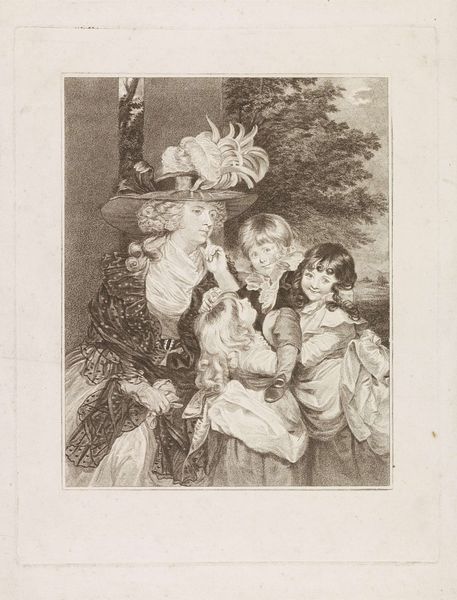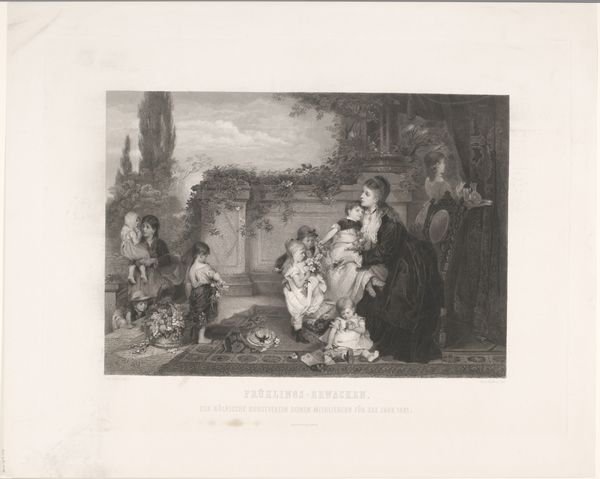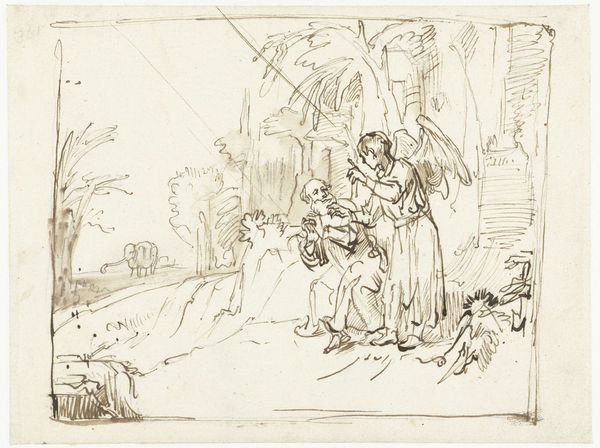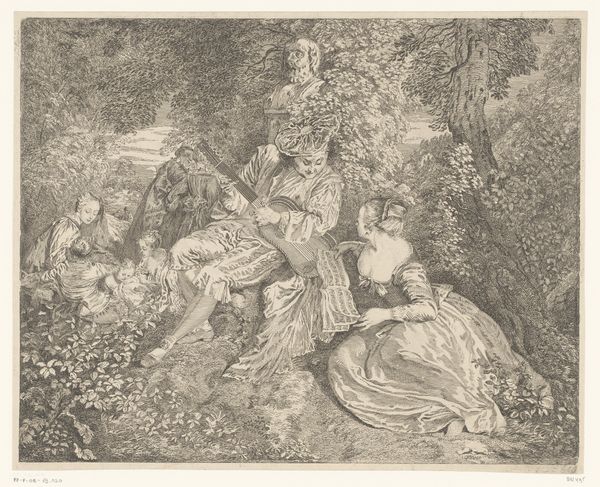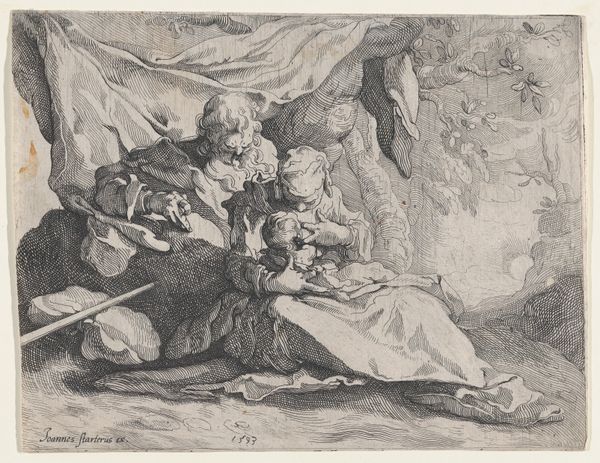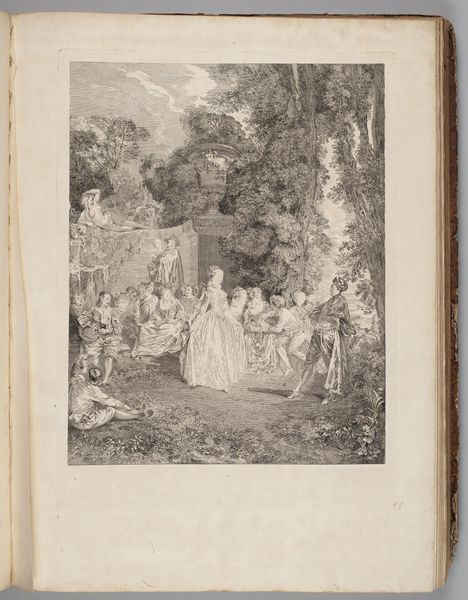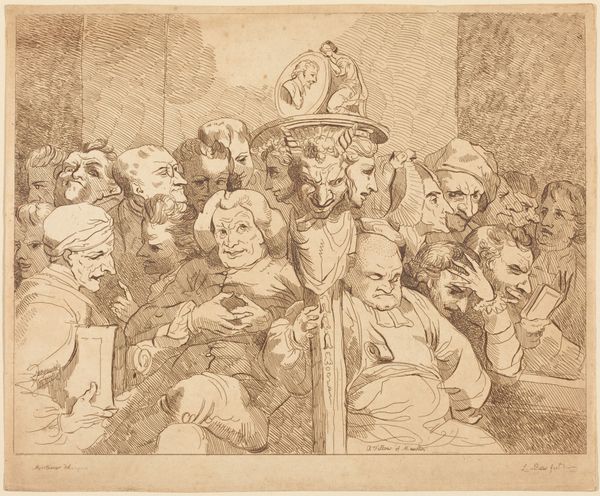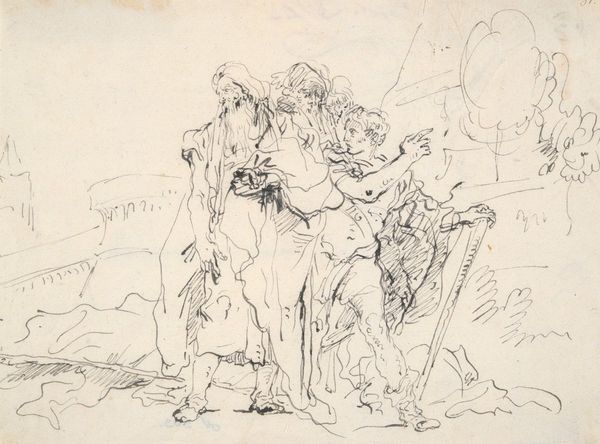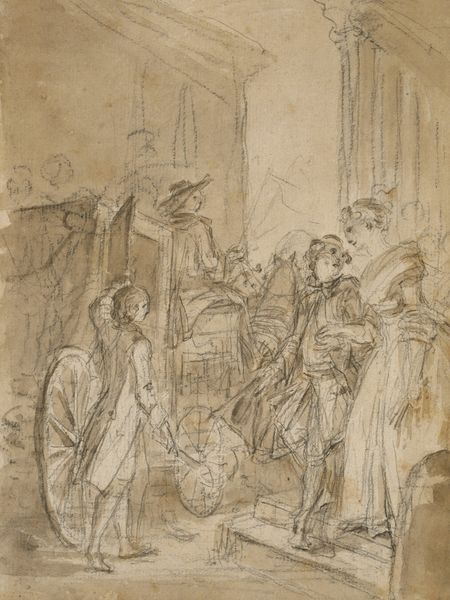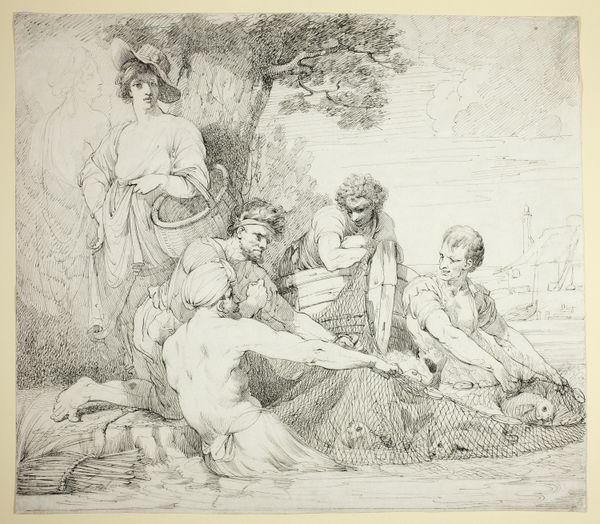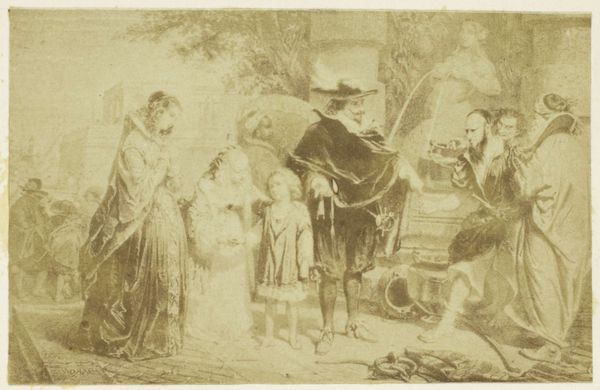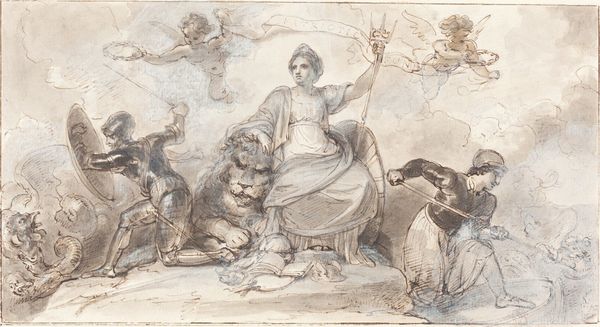
drawing, watercolor, ink
#
portrait
#
drawing
#
ink painting
#
charcoal drawing
#
figuration
#
watercolor
#
ink
#
romanticism
#
genre-painting
#
watercolor
Copyright: Public Domain: Artvee
Curator: Here we have Eugène Delacroix's "'The Swing,' after Antoine Watteau," created sometime between 1798 and 1863, using ink and watercolor. What are your first impressions? Editor: It’s dreamlike. The sepia tones create a sense of faded grandeur, almost like a memory struggling to hold its shape. The figures blend softly into the background. Curator: Delacroix made several copies and studies after works by Watteau. What does this choice tell us about Delacroix's artistic formation, and how do you interpret the act of replication? Editor: It's Delacroix engaging in a dialogue with the artistic canon. In copying Watteau’s “The Swing”, he not only hones his technique but also explores the social and political undercurrents of the Rococo period. The playful eroticism in Watteau's original takes on a different resonance in Delacroix’s time, potentially hinting at Romanticism’s engagement with personal freedoms. Curator: Absolutely, the shift towards Romanticism, and we see this through his dramatic ink handling. The way Delacroix uses ink washes creates a theatrical backdrop for the scene, heightening the emotional tension and suggesting a world on the brink of change. What’s fascinating is how this copy both honors and reinterprets Watteau. Editor: Indeed. Looking at the assembled figures surrounding the swing, I sense a commentary on spectatorship, perhaps mirroring the observers of art itself. Who is granted the right to observe, to participate, and to enjoy such leisurely spectacles became increasingly pertinent in revolutionary times. Curator: Precisely, these genre scenes, when filtered through a Romantic lens, allow Delacroix to critique societal norms and question who gets to swing, both literally and figuratively, within the existing power structures. Editor: The figures gain dimension by the bold, graphic rendering of details such as their hair, hats and clothing. But the woman in charge of the swing set recedes as just a light figure - maybe she isn't who Delacroix wants us to be thinking about. Curator: A fitting close, focusing on a figure on a swing. Delacroix truly compels us to consider the position of women in this historical tapestry. Editor: Yes, each line carries weight. This image reminds us of art’s capacity to hold a mirror to society.
Comments
No comments
Be the first to comment and join the conversation on the ultimate creative platform.


